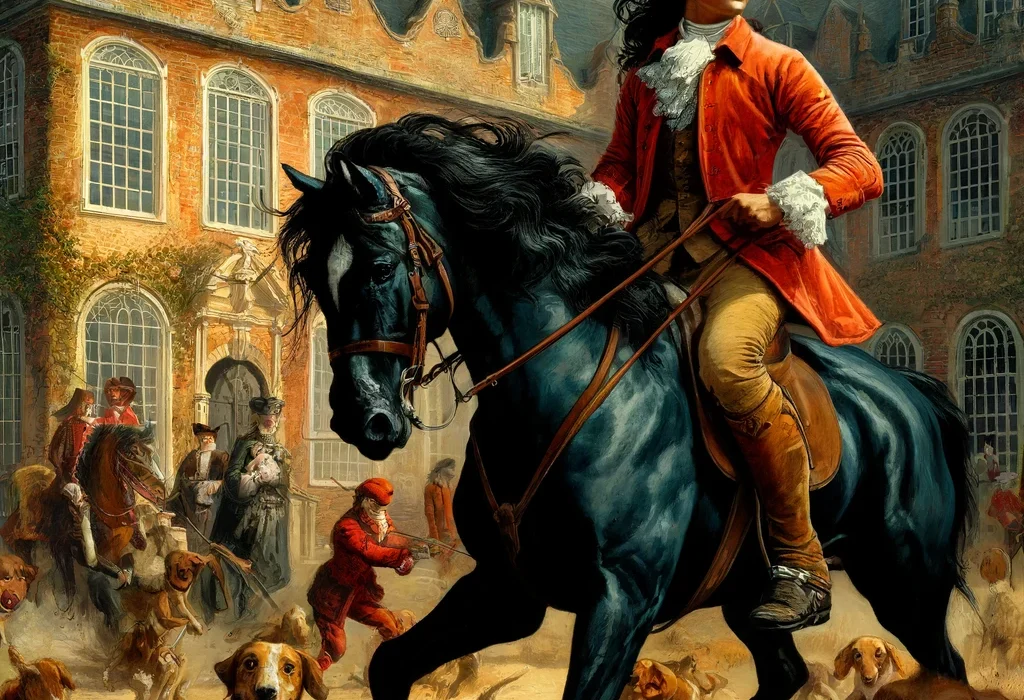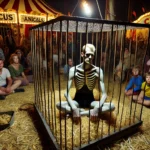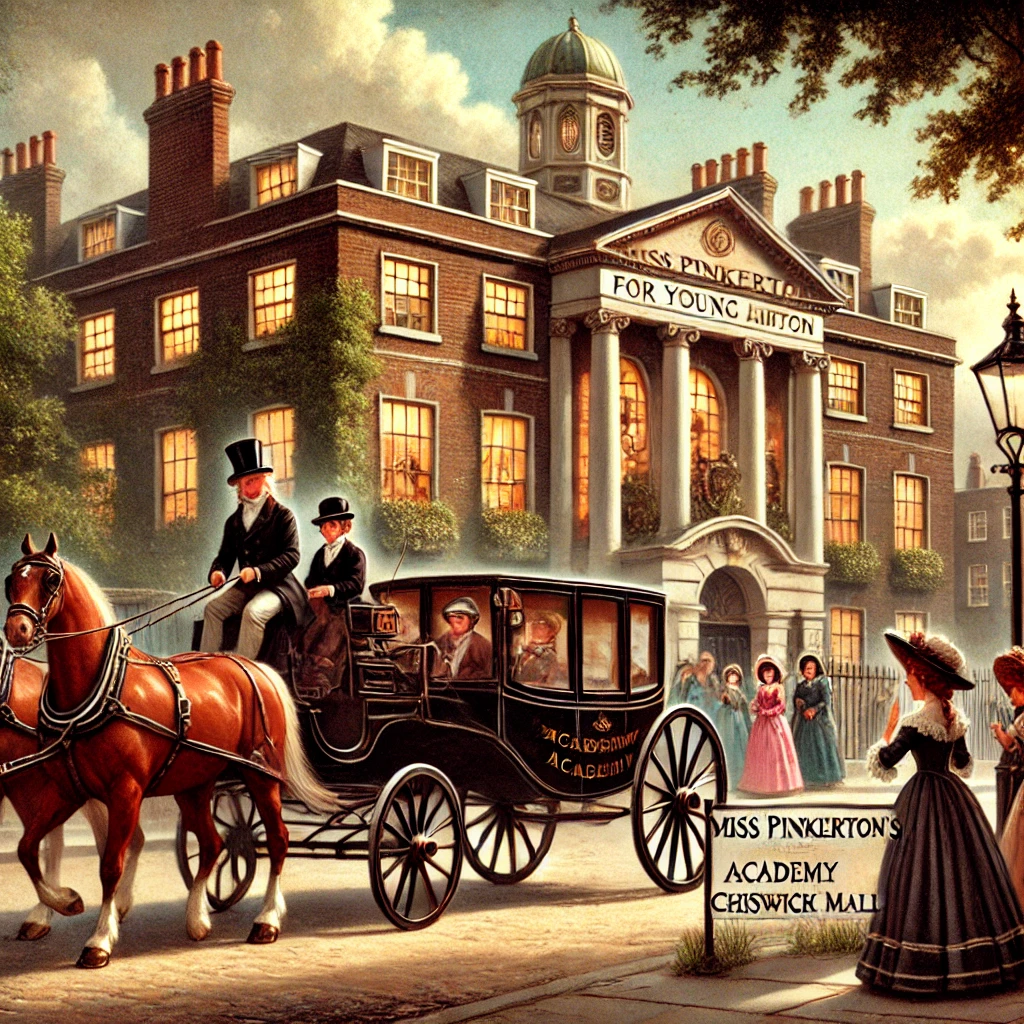“A Lady of Quality” by Frances Hodgson Burnett was published in 1896. Known for her children’s books like The Secret Garden, Burnett delves into adult fiction with this historical novel, set in the late 17th and early 18th centuries. The story revolves around the strong-willed Clorinda Wildairs, a fiercely independent woman who rises above her tumultuous and morally questionable upbringing in the English countryside. Through its richly developed characters and intricate plot, the novel explores themes of gender, power, and social expectation.
Plot Summary
On a cold November morning in 1690, at Wildairs Hall, Sir Jeoffry Wildairs, a coarse and choleric nobleman, prepares for a hunting trip. He is a man of boisterous habits, known for his violent temper and debauched lifestyle. His servants and guests are used to his rough manner, but on this particular morning, his already foul mood is worsened by news from his wife’s chamber. His wife, Lady Wildairs, lies on her deathbed after giving birth to another daughter—their ninth child, all of whom are girls. Sir Jeoffry, bitter at not having an heir, dismisses the news and rides off to hunt, cursing his wife for bearing him another useless daughter.
Upstairs, Lady Wildairs breathes her last breath, cold and alone, whispering her fears about the newborn’s fate. Her worries are not unfounded, for this child, Clorinda, is born into a loveless and chaotic home. Her father resents her existence, and her upbringing is left to the servants, who care little for the proprieties of nurturing a young girl. Unlike her weak and timid sisters, who fade into the background of Wildairs Hall, Clorinda grows into a wild and spirited child, full of strength and defiance. She is beautiful, with striking dark eyes and a commanding presence even in her infancy, and it becomes clear that she is not like the others.
Clorinda’s temperament is fierce, and she quickly learns that power comes through asserting herself. Raised among the servants, stable boys, and hunting dogs, she swears like a soldier, rides like a huntsman, and has a will as unyielding as her father’s. Her early years are spent in rebellion, often clashing with the men of the household who find amusement in her fiery temper. Sir Jeoffry, who initially despises her, begins to take a peculiar interest in his youngest daughter when he witnesses her fierce nature firsthand. When she boldly attacks him in a rage for taking her favorite horse, her spirited defiance endears her to him. From that moment, she becomes his favorite, indulged in every whim.
As she grows, Clorinda’s beauty and wildness become the talk of the county. She hunts with her father and his rowdy companions, often wearing breeches and riding astride like a man, much to the dismay of the more conventional families nearby. She revels in her freedom, unconcerned with the expectations of society, until a visiting chaplain, sent by a distant relative, arrives to admonish Sir Jeoffry for allowing his daughter to behave so improperly. The chaplain warns that Clorinda’s reputation will suffer, and no gentleman will marry her. Amused, Clorinda mocks the chaplain, but the encounter plants a seed in her mind.
As she approaches womanhood, Clorinda begins to realize the power her beauty holds over men. Though she has grown up wild and untamed, she now sees that her future may depend on the very thing she has scorned—marriage. She decides to leave behind the breeches and her boyish antics, embracing the role of a woman of quality. Her transformation is swift and calculated. She begins to dress in the finest silks and satins, learns the arts of coquetry, and sets her sights on Lord Dunstanwolde, an older, wealthy nobleman of high standing. Lord Dunstanwolde, captivated by Clorinda’s beauty and grace, proposes marriage. Though he is much older and not the passionate match Clorinda might have dreamed of in her youth, she accepts, seeing the union as a way to secure her future and elevate her status.
After marrying Lord Dunstanwolde, Clorinda becomes the toast of society. She is admired for her beauty, wit, and charm, but beneath the surface, she struggles with the memory of her past. The wild, untamed girl of Wildairs Hall still lurks within her, and though she plays the role of a noble lady perfectly, there are moments when her true nature threatens to break free. Her marriage is comfortable, though not passionate, and Clorinda is respected and even loved by her husband, who is content to worship her from a distance.
However, her peace is shattered when she encounters John Oxon, a handsome and rakish young man who becomes infatuated with her. John’s charm and daring remind Clorinda of the wildness she has tried to suppress, and the two begin a dangerous flirtation. Clorinda is drawn to John’s reckless spirit, and despite her better judgment, she finds herself entangled in a passionate affair. The affair is fraught with danger, for John is a man with no scruples, and as Clorinda becomes more deeply involved, she realizes that he poses a threat not only to her reputation but to her very life.
Her relationship with John Oxon spirals out of control. He becomes possessive and cruel, threatening to expose their affair and ruin her carefully constructed life. Clorinda, who has always prided herself on her control and independence, finds herself cornered. Faced with the possibility of losing everything she has worked for, she is forced to take drastic action. In a moment of desperation, she confronts John and, in a fit of rage, kills him. It is an act of both survival and revenge, and it marks the end of the carefree, rebellious spirit that once defined her.
Clorinda manages to cover up the murder, but the weight of her actions haunts her. She returns to her husband, who remains blissfully ignorant of her dark deeds, and dedicates herself to maintaining the facade of the perfect wife. However, the shadow of her past lingers, and Clorinda is forever changed by the choices she has made. In the end, she emerges as a woman who has fought for her place in a world that sought to control her, but at a great personal cost
Main Characters
Clorinda Wildairs – The protagonist, Clorinda, is a spirited, beautiful, and often wild woman who defies societal expectations of femininity. Raised in a morally questionable environment by her neglectful and debauched father, she uses her beauty and wit to manipulate those around her. As she matures, she navigates love, power, and her own desires, becoming both feared and admired.
Sir Jeoffry Wildairs – Clorinda’s father, Sir Jeoffry, is a brutish, hard-drinking man who neglects his daughters, particularly Clorinda. His debauchery and lack of care shape much of Clorinda’s childhood, but he finds amusement in her rebellious spirit and beauty, encouraging her untamed behavior.
Anne Wildairs – Clorinda’s quiet and meek elder sister, Anne is the polar opposite of her flamboyant sibling. She lives in the shadow of Clorinda, both socially and emotionally, yet plays a significant role as the story unfolds, particularly in the realm of family loyalty and personal sacrifice.
John Oxon – A young and handsome suitor who becomes enamored with Clorinda. His charm and roguish behavior make him an intriguing yet dangerous character in her life, contributing to her complex romantic entanglements.
Lord Dunstanwolde – A wealthy and influential nobleman who represents the more conventional, restrained aspects of English aristocracy. He is captivated by Clorinda and plays a crucial role in her eventual transformation into a lady of high society.
Theme
Gender Roles and Power: Clorinda defies the traditional roles of women in her time, wielding her beauty and intelligence to gain control over men. The novel explores the limitations imposed on women and how Clorinda both succumbs to and subverts these expectations.
Moral Ambiguity: Clorinda’s upbringing and her actions throughout the novel raise questions about morality, as she often engages in manipulative and questionable behaviors. The novel invites readers to consider whether her circumstances justify her actions.
Transformation and Redemption: Clorinda’s journey from a wild and untamed girl to a refined lady of quality mirrors the themes of personal growth and redemption. Her struggle to reconcile her past with her present identity is central to her character development.
Class and Social Mobility: The novel highlights the rigid class structures of 17th-century England, focusing on Clorinda’s rise from the daughter of a disreputable lord to a woman of high social standing. Her social ascent underscores the tension between birthright and individual agency.
Writing Style and Tone
Frances Hodgson Burnett employs a richly descriptive and immersive writing style, evoking the historical setting with vivid detail. Her use of elaborate language reflects the period, with grand, dramatic dialogues that match the emotional intensity of the characters, particularly Clorinda. The novel’s prose is both elegant and accessible, blending historical fiction with a psychological depth that makes Clorinda’s internal struggles compelling.
The tone of the novel alternates between satirical and serious, especially in its treatment of societal norms and gender roles. Burnett often injects humor, particularly in scenes involving Sir Jeoffry and his crass companions, contrasting sharply with the darker, more introspective moments of Clorinda’s journey. The novel’s tone also shifts as Clorinda matures, moving from the reckless energy of her youth to a more reflective, somber atmosphere as she grapples with her past and seeks redemption.
We hope this summary has sparked your interest and would appreciate you following Celsius 233 on social media:
There’s a treasure trove of other fascinating book summaries waiting for you. Check out our collection of stories that inspire, thrill, and provoke thought, just like this one by checking out the Book Shelf or the Library
Remember, while our summaries capture the essence, they can never replace the full experience of reading the book. If this summary intrigued you, consider diving into the complete story – buy the book and immerse yourself in the author’s original work.
If you want to request a book summary, click here.
When Saurabh is not working/watching football/reading books/traveling, you can reach him via Twitter/X, LinkedIn, or Threads
Restart reading!








